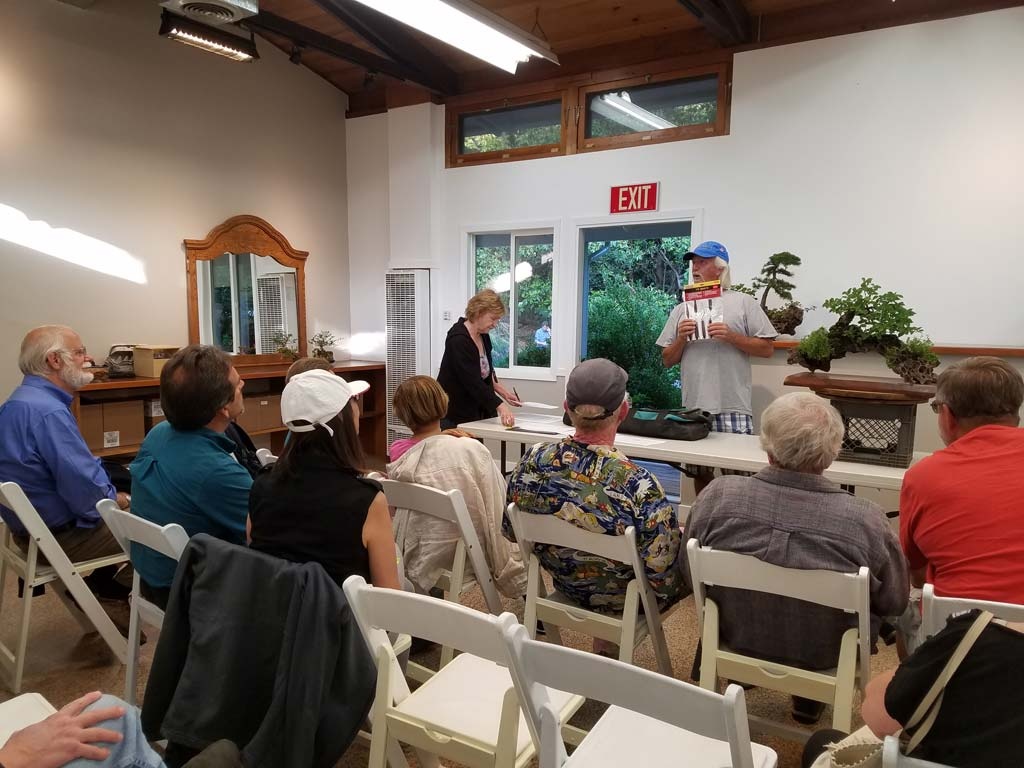The June 6, 2017 meeting of the Marin Bonsai Club featured our very own Jay McDonald, who demonstrated some work on a sizable, two-tree rock planting, which was raffled off at the end of the night. Jay had assembled the planting earlier this year, almost completely from materials he obtained at the Golden State Bonsai Federation’s Mammoth event in February. Its well-established health was a testament to Jay’s skill with this fascinating subcategory of bonsai artistry.
Before starting in on the rock planting of the evening, Jay first introduced us to another, older planting he had created, featuring a Nanking Cherry tree, the arcing limbs of which complemented the giant arc of the rock. Planting trees in rocks requires a fair bit of ingenuity. Sometimes you have to drill or chisel into a rock to create more space for roots, find unique ways to attach anchor wire, or epoxy small bits of rock in place to eliminate the tippiness of a rock. For his Nanking Cherry rock planting, Jay showed us where he had to create more root space by attaching a large piece of screen (the type we all use to cover the holes in our pots) across a gap in an otherwise high side of a natural bowl in the rock. There’s no amount of accent plants and moss that will completely cover something that dramatic, but since it’s in the back of the planting, the end result works and looks just fine.
Next Jay introduced us to his current subject matter, a Cedar of Lebanon planted with a unique maple, appropriately spaced and arranged with accent plants on a nice dramatic Continue reading










